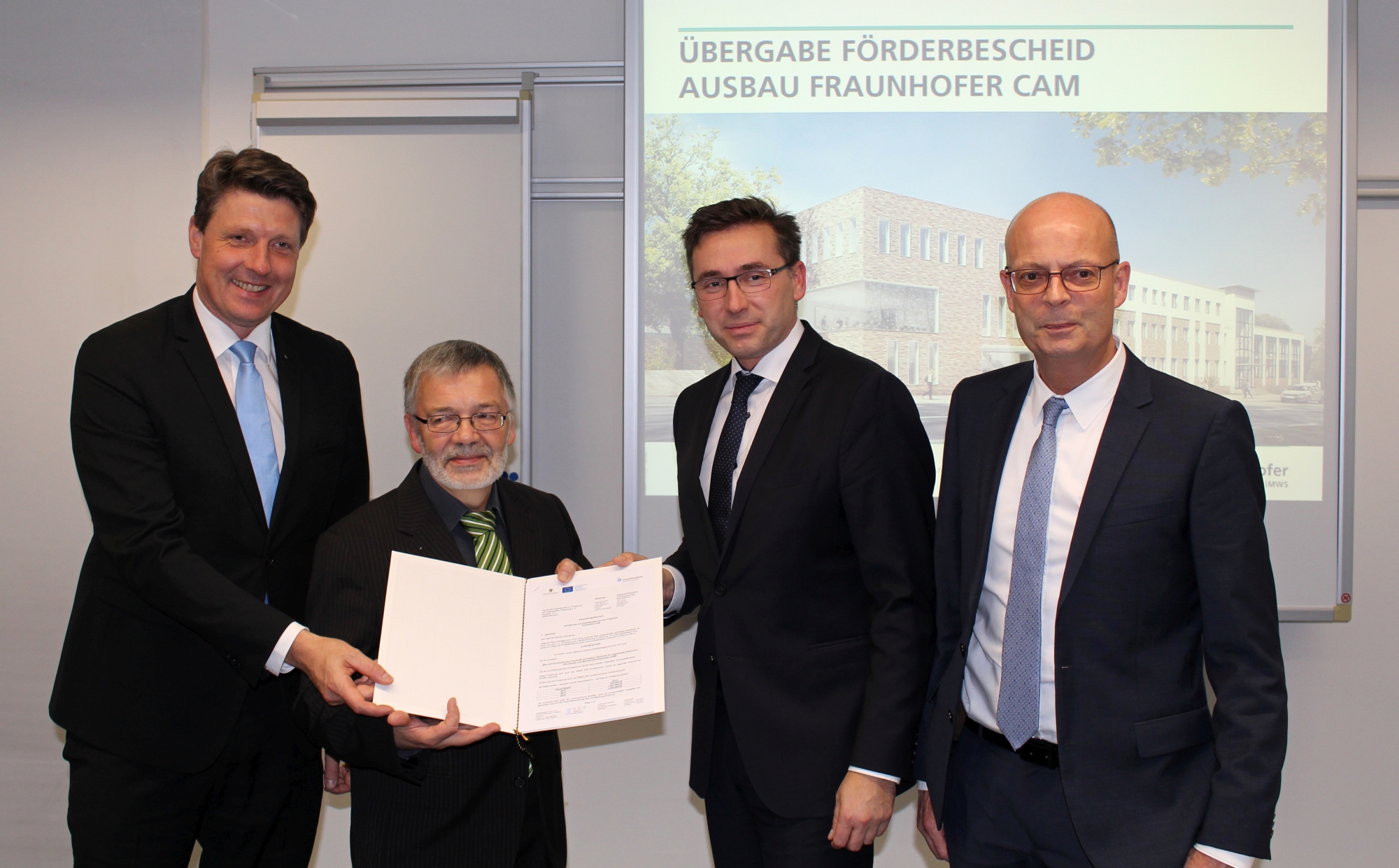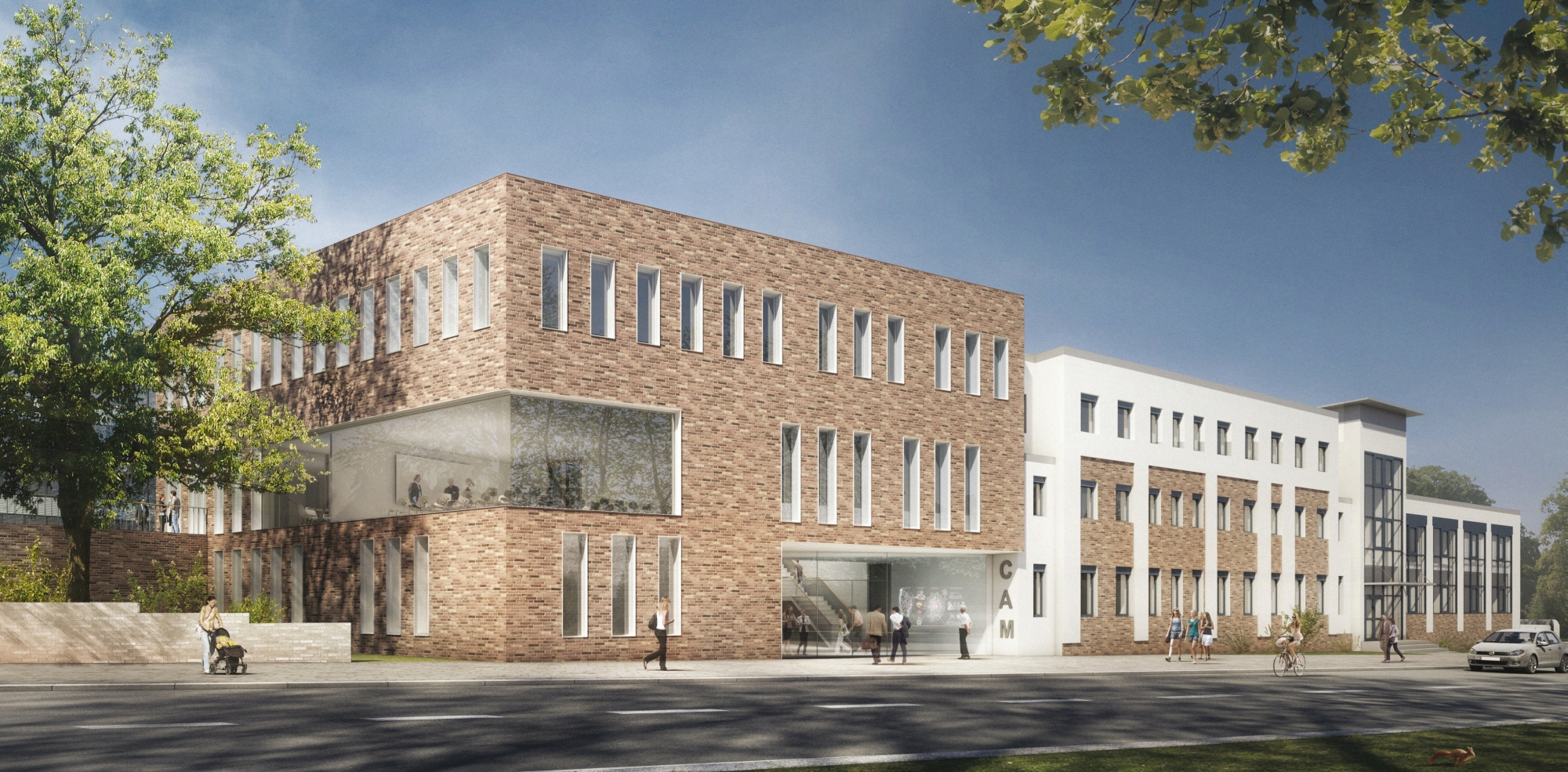New methods for material analysis: Fraunhofer-Competence-Center will be expanded
A detailed understanding of material behavior down to the atomic level is fundamental, in order to improve the safety, availability and life of components. At the Fraunhofer Institute for Microstructure of Materials and Systems IMWS we will have better opportunities to do this in the future: The Fraunhofer Competence Centre for Applied Electron Microscopy and Microstructure Diagnostics (Fraunhofer CAM). Thomas Wünsch, State Secretary in the Ministry of Economy, Science and Digitisation of the State of Saxony-Anhalt, handed over the funding decision today. Construction begins in February 2017.
In the new rooms, which will provide laboratories, offices, seminar and meeting rooms with a total area of 770 m2, the Fraunhofer researchers will look into the very core of the materials: How do defects occur? How do ageing processes take place? How does the material respond under certain manufacturing or use conditions? Efficient microstructure and nanostructure methods of analysis provide the answers to these questions and ensure that materials and components are made better performing and more efficient, and safer and more reliable in use. this is a central topic, for example, for the electronics in cars on the way to autonomous driving.
»In am very pleased that with this grant, 50 percent of which comes from the European Fund for Regional Development (EFRE), we are able to strengthen the location in Halle. Because the Fraunhofer IMWS is not only a valued partner for the regional economy, but is also an initiator for innovations in many important industries in the state«, said Thomas Wünsch, State Secretary in the Ministry of Economy, Science and Digitisation of the State of Saxony-Anhalt, who handed over the funding decision.
»With the extension of the Fraunhofer CAM we are consolidating our international top position in the field of microstructure diagnostics. The new equipment will enable us to obtain even more precise insights into the materials. In addition, we will be able to develop completely new material and defect analysis techniques. In this way we will provide a real competitive advantage for our clients in Saxony-Anhalt and beyond, especially through high quality and reliability, and thus the improved market position of high-tech products«, said Prof. Ralf B. Wehrspohn, Head of the Fraunhofer IMWS.
In research cooperations with leading industrial companies, the diagnostics methods and equipment developed in Halle are intended, for example, to support the development of electronics for new assistance, communications and control systems of automotive engineering. »Enormous technological innovation rates of our partners from the electronics industry for future mobility must be compatible with the highest quality and reliability requirements of the automotive industry. The need for new, more efficient and faster material analysis methods, with which potential weakpoints and defects can be identified and avoided in good time, is therefore growing quickly and motivates a large part of our work«, explained Prof. Matthias Petzold, Head of the Fraunhofer CAM, which belongs to the Fraunhofer IMWS.
The new methods of analysis are also used for power electronics for electromobility and renewable energy technology, in the increasingly digitized industrial technology, for semiconductor LEDs, for intelligent, energy-saving lighting and for the development of new nanostructured materials, for example, for optical applications or for the health sector. The extended Fraunhofer CAM will also function as an interface between potential industrial users in the area of microstructure diagnostics, nanoanalysis, and material characterisation and the corresponding equipment manufacturers.
One focus of the work will be on new methods and concepts of electron microscopy, which should enable more precise and faster examination of nanostructures and surfaces – a traditional core expertise at the Weinberg-Campus science location in Halle. This also includes innovative techniques for fast preparation of samples, for example, for 3D analysis of the microstructure of materials. Non-destructive methods of analysis using ultrasound and X-rays or trace detection on surfaces are also to be developed further. Apart from development, attention will also be focussed on researching new possible applications for the diagnostics technologies researched in Halle through to subsequent transfer to the market.


